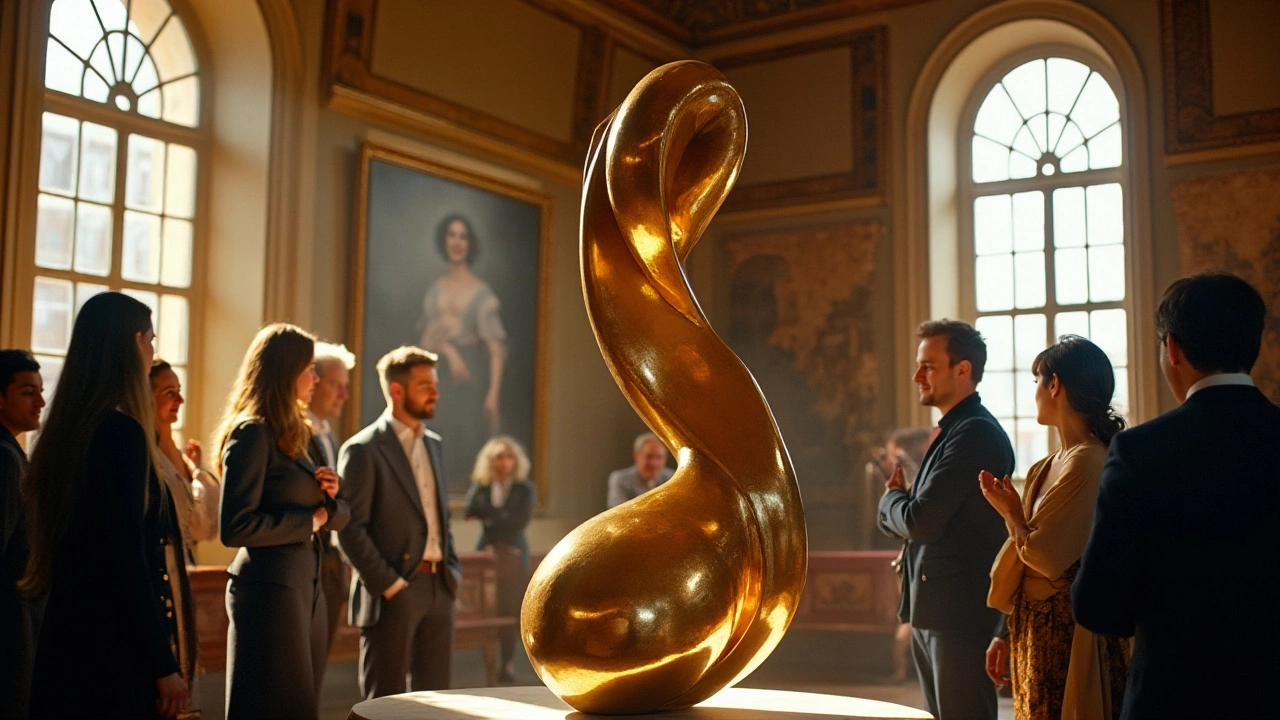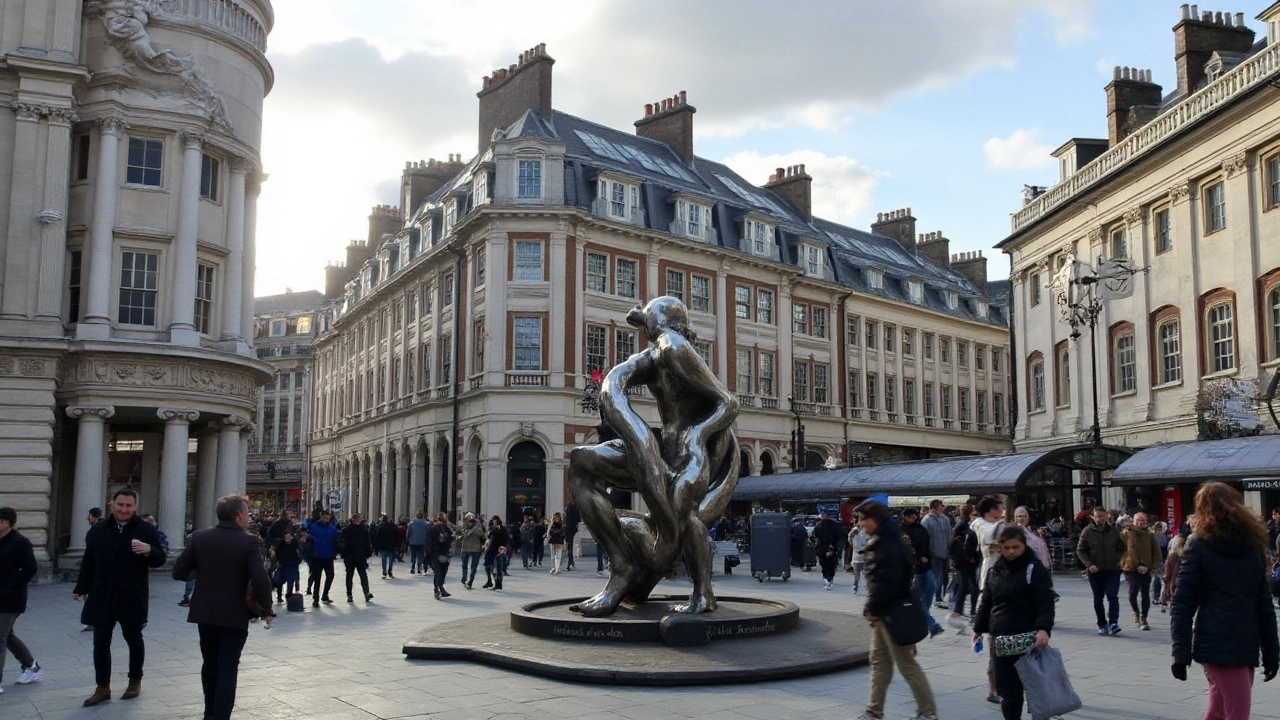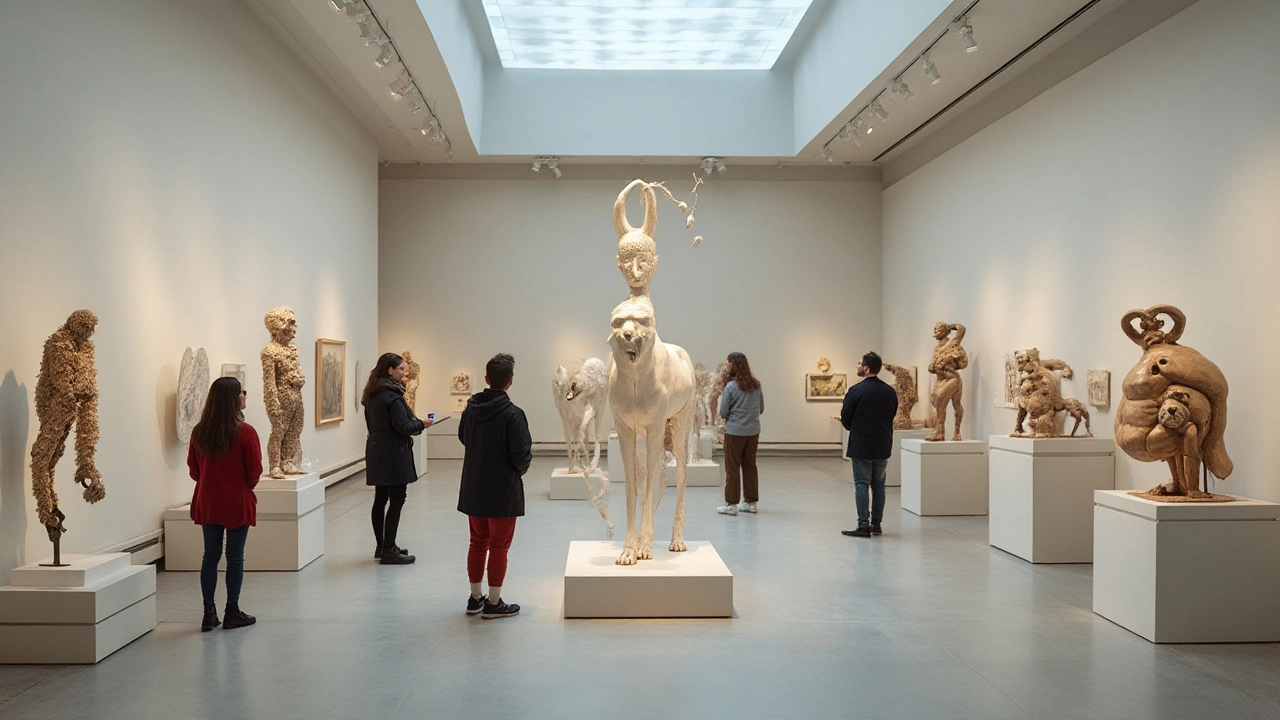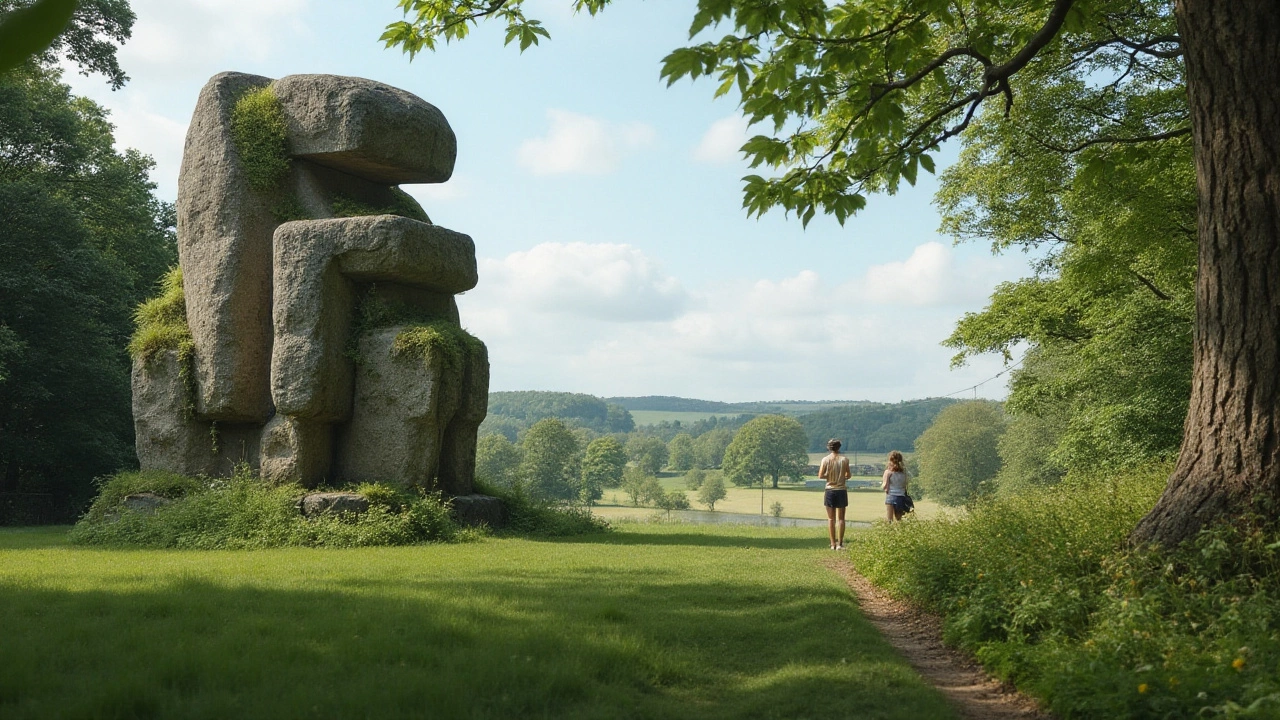Sculpture, with its rich textures and forms, invites the touch of both the observer's eyes and hands. It stands at a curious juncture between two realms: art and design. For centuries, artists have chiselled stone and molded clay, producing works that captivate and challenge our perception of space and form.
In considering whether sculpture is art or design, we venture into a nuanced territory where definitions often blur. Art, by nature, seeks to express, evoke, and transcend, while design tends to imply functionality, utility, and intention. But what happens when a sculpture serves both, or neither?
Exploring different epochs and styles, we find sculptures embedded in daily life—as functional objects—and standing alone in galleries as profound expressions of human thought. As we delve into this majestic world, we might uncover not only the language of the sculptor but also perhaps, the soul of society echoed through the inanimate solidity of their work.
- Understanding Sculpture as Art
- Functional Aspects of Sculpture in Design
- Historical Perspective and Evolution
- Contemporary Examples of Art and Design in Sculpture
Understanding Sculpture as Art
The journey of sculpture from raw material to a finished piece can be as complex as the thoughts it aims to convey. As an art form, sculpture transcends mere physical form to express emotion, narrative, and the intangible essence of the human experience. Throughout history, it has served as a profound medium for artists, from the stoic beauty of ancient Greek statues to the abstract tendencies of modern and contemporary works. By interacting with spaces and challenging perceptions, sculptures offer viewers more than just visual pleasure, they provide an experience that involves spatial awareness and emotional resonance.
In the realm of art, sculptures have the power to capture philosophical ideas, provoke emotional responses, and even communicate messages that words cannot. Take for instance Michelangelo's 'David', a masterpiece which not only depicts the human form with exceptional realism but also encapsulates themes of strength, defiance, and beauty. This work exemplifies how sculpting can elevate mere stone into the living embodiment of human ideals. This transformative process from thought to tangible form is where creativity meets skill, and where artistry transcends to its purest form.
Historically, sculptures have defined cultural moments and reflected societal values. The intricate carvings of Indian temples or the stylized forms of African tribal sculptures highlight the rich variety of symbolisms that different cultures imbue in their artworks. These artifacts often tell stories of mythologies, religious beliefs, and communal traditions, acting as both historical records and artistic achievements. “Art enables us to find ourselves and lose ourselves at the same time,” as Thomas Merton aptly put it, a sentiment that resonates deeply with the world of sculpture.
Sculpture as an art form also possesses an incredible diversity in materials and techniques. Stone, metal, wood, clay, and now even digital media, provide endless possibilities for expression. Each material carries its own set of challenges and characteristics, which the artist must understand and manipulate to convey their vision effectively. This complex interplay of technique, material, and creative intent is what distinguishes sculpture as a sophisticated and respected art form.
Contemporary sculpture artists continue to push the boundaries of creativity and perception. Artists like Anish Kapoor and Louise Bourgeois have brought a new perspective to sculpture, integrating modern themes with traditional craftsmanship. This progressive thinking demonstrates the evolving nature of sculpture art, reminding us that it is not just static but a dynamic form constantly reinventing itself. In today’s digital age, sculptures can even be interactive, inviting audiences not just to observe but also to engage, thus blurring the lines between art and experience.

Functional Aspects of Sculpture in Design
When we talk about sculpture within the context of design, we open the doors to a realm where aesthetics meet utility. This intersection is not new; in fact, ancient cultures often integrated sculpture into their daily environments, spanning from grandiose architectural embellishments to mundane items like tools and vessels. Such incorporation was not merely decorative but served practical roles. Think of the stunning gargoyles of medieval cathedrals – those mystical creatures were indeed expressions of art, yet they discreetly acted as water spouts, protecting the stonework from rain damage.
Sculpture transcends mere beautification when its functionality is integrated into everyday life. Contemporary design frequently employs sculptures within urban landscapes, where sculptures double as benches or even interactive installations that invite community engagement. The multifunctionality found in these works challenges traditional notions, shifting our understanding from viewing art merely as something to observe to something to experience. In modern architecture, for instance, sculptures often act as stunning centerpieces that serve to guide foot traffic or create distinct spatial dynamics, demonstrating a seamless fusion of art and design.
Perhaps, one of the most striking examples of sculpture's role in functional design is seen in the work of Isamu Noguchi, who deftly blurred the lines between sculpture and landscape architecture. His playground designs in the mid-20th century took the concept of sculpture beyond mere static display, evolving it into dynamic spaces for interaction that influenced contemporary urban design. Talented sculptors like Noguchi have displayed how creativity can serve a dual purpose, merging aesthetic appeal with practical function to enhance human experience.
Often, the sculpture art involved in design is informed by an intention to solve spatial or ergonomic challenges creatively. Artists and designers collaborate to conceive pieces that are not only visually captivating but also profoundly clever in their utility. This capacity for dual-purpose creation is a testament to the innovative spirit within the field, highlighting ways sculpture continues to evolve beyond traditional norms. Such evolutionary creativity reflects the changing demands of society, offering not only beauty but also purpose-driven solutions through sculpture.
According to a report by the Smithsonian Institution, "The intersection of art and design in sculptural work offers unique opportunities for artists to redefine spatial relationships and challenge viewers' perceptions of their surroundings."
Recent trends in sustainable design have also encouraged a renaissance of sorts in functional sculpture art. Designers now often integrate sculptures using recycled materials or create structures that enhance environmental efficiency. Imagine a sculptural installation purposed to harness solar energy in a park or rain gardens that double as captivating art forms; both illustrate how sculpture can effectively address ecological concerns while remaining aesthetically pleasing.
In essence, the role of sculpture in modern design is to continually push boundaries, bridging the abstract with the tangible. It compels us to reconsider the potential of art in our functional spaces and invites new narratives into the dialogue between art, utility, and human interaction.

Historical Perspective and Evolution
The history of sculpture art stretches back to some of the earliest expressions of human creativity, offering glimpses into not only the past but the evolution of human thought. Ancient civilizations were among the first to harness the beauty of sculpting, with artifacts that served religious, ceremonial, and decorative purposes. In ancient Mesopotamia, for instance, sculpture was often tied to religious practices, with statues serving as guardians for sacred spaces. These early works were more than mere objects—they were imbued with spiritual significance and demonstrated a fusion of practicality and art.
As time wandered forward into the classical age, the Greeks revolutionized sculpture by placing a heightened emphasis on human form and proportion. Greek sculptors like Phidias and Polykleitos crafted figures that celebrated the human body, capturing not only physical realism but also an idealistic beauty that still resonates today. These sculptures were often replicas of gods, heroes, and athletes, embodying both artistic ambition and cultural significance. With the Hellenistic period, there came an exploration of diverse expressions and emotions in sculptures, introducing a dynamic force that would guide future evolutions.
The transition from classical antiquity to the Renaissance period marked another significant leap in the world of sculpture. The Renaissance heralded an era where art and science collided harmoniously, influencing sculptors to explore anatomy and perspective in new ways. Michelangelo's marble masterpiece, David, stands as a testament to this era's unrivaled expertise and artistic boldness, merging technical skill with profound narrative depth. The Renaissance set a precedent for future generations, enlightening sculptors on the potential of their medium beyond mere replication of form to a transformative expression of ideology and philosophy.
"The longer you look at an object, the more abstract it becomes, and, ironically, the more real."—Lucian Freud, capturing the essence of sculpture's ability to transcend material reality.
As we move into the modern age, sculpture continued its transformation by embracing new materials and methodologies. Artists like Auguste Rodin began breaking away from classical norms, introducing pieces that captured internal movement and thought through expressionistic styles. By the 20th century, sculpture entered into an era defined by a questioning of boundaries. Sculptors such as Henry Moore and Barbara Hepworth pushed conventional expectations, using abstract forms and public spaces in unprecedented ways.
With the dawn of the digital era, sculpture saw yet another paradigmatic shift, as digital sculpting and 3D printing entered the scene. This technology allowed sculptors to experiment with forms not previously possible, presenting both a challenge and an opportunity. Today, sculpture is more than just carving or modeling; it involves a collaboration of technology, tradition, and innovative design processes. This evolution continues to challenge our perceptions of art and design, making the history of sculpture as vibrant and dynamic as the forms it takes. A striking example is the increasing use of design principles in sculptural endeavors, often emerging in the fields of architecture and urban development.

Contemporary Examples of Art and Design in Sculpture
In today's creative landscape, the meaning of sculpture continues to evolve as artists and designers push boundaries. Whether it’s a sleek, modern piece that doubles as furniture or an installation that makes a profound artistic statement, contemporary sculptures often inhabit roles beyond traditional definitions. One notable example is the work of Anish Kapoor, whose monumental pieces emphasize the interplay of light, form, and spectatorship. His vast public art installations challenge the notion of space and perception, showcasing how sculpture art can exist as both a designed structure and an artistic experience.
Public spaces today are filled with sculptures that serve not only an aesthetic function but also interact dynamically with their environments. Take, for instance, the urban landscapes transformed by the works of artist Janet Echelman, known for her ethereal floating sculptures made from mesh and colored LED lights. Her installations integrate art, design, and advanced engineering techniques, suspending urban viewers in a web of light and motion. Such creations illustrate the creativity intrinsic to combining artistic ambition with intricate design.
The Blend of Functionality and Expression
The dichotomy of art and design in sculptures is beautifully demonstrated by works like those of Olafur Eliasson. His projects not only function within architectural environments but also provoke thoughtful reflection on climate issues and human interaction with nature. Works such as "The Weather Project," displayed in Tate Modern, engage audiences beyond mere visual delight, bridging the gap between functional design and evocative art.
"Art is not made for anybody and is, at the same time, for everybody. Art becomes meaningful only when it is shared." — Anish Kapoor
Another exciting development in contemporary sculpture is the emergence of 3D-printed works. Artists and designers now leverage technology to create complex forms that were previously impossible by traditional methods. These pieces not only highlight innovation in art but also signify a shift towards sustainable practices. The convergence of digital design and traditional art forms represents an exhilarating frontier where human creativity meets technological advancement, leading to sculptures that captivate and resonate with diverse audiences.

